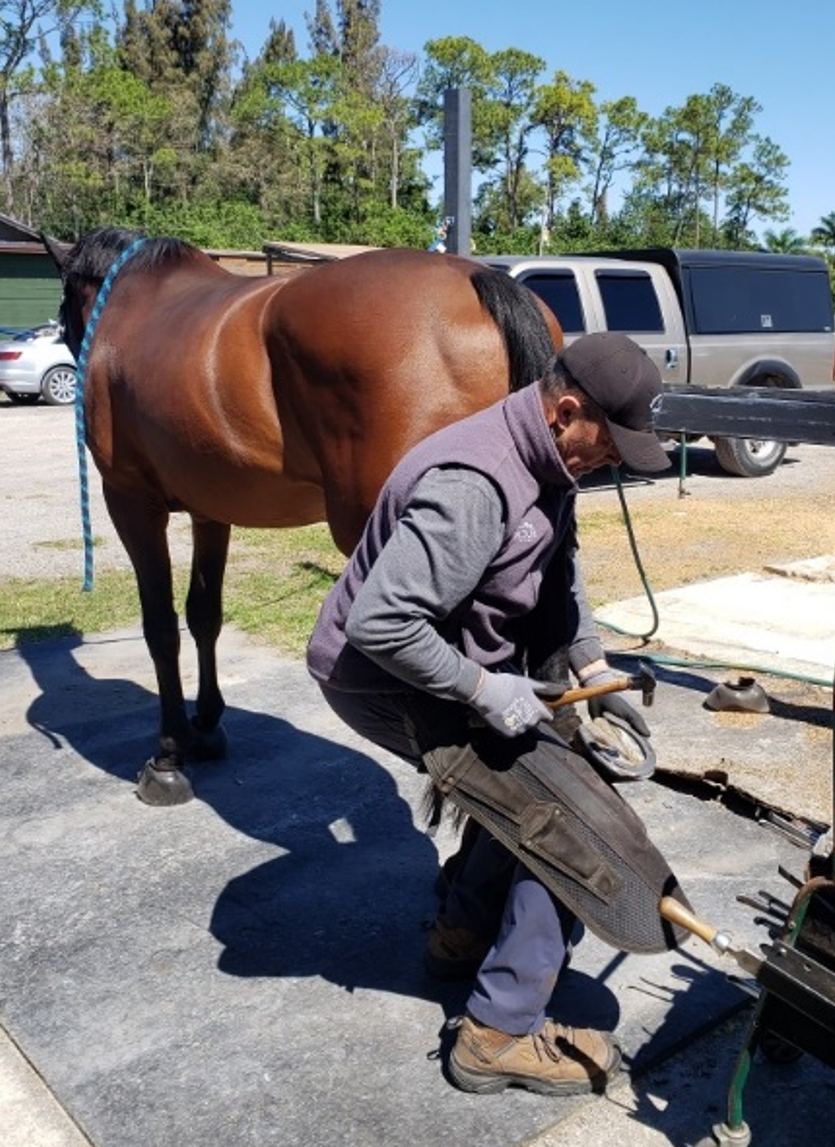Exercise for the Farrier: Part 1There are few professions that are as physically demanding as being a farrier…to which I can certainly attest. Furthermore, the farrier has to assume an unnatural position / posture for countless hours a day when performing farriery. It is often noted, that to be a farrier…the individual must have a ‘strong back’. For example, if one considers the maintenance of a ‘strong back’…the back muscles have to have good reciprocity with the abdominal muscles to maintain posture, the core has to be strong and flexible and the position the farrier assumes has to be held in place by the muscles of the pelvic floor. Anyone who has come to my clinics or seminars has heard me describe the benefits of initiating some type of exercise program to preserve health and prevent injury from the constant daily stress of being a farrier. Exercise also plays a huge role in extending the farrier’s longevity in the profession without pain. There is a big difference between ‘physical work and physical exercise’. I am truly fortunate to know and use two highly qualified personal trainers, Colby Schreckengost and Pam Finney - both not only try to keep me in excellent physical condition but they both continually reinforce the necessity of exercise. I have asked both of them to write a few paragraphs on the benefits of an exercise program as well as a few simple exercises that would be helpful for farriers.
 Picture shows a farrier (Fabio Gnoatto) with good posture shoeing the hind foot of a horse.
The response from both trainers was phenomenal…not only did they share their thoughts on the benefits of exercise; they both outlined and illustrated a simple exercise program that could easily become part of a farrier’s routine. It just takes a little commitment! The first article from Colby Schreckengost appears below…
Long-Term Health & Fitness for the Farrier: Can you last? A farrier’s body takes a beating week-in and week-out. In the short term the effects are not too harsh. Especially for the young and healthy equine professional. Fast forward 15-20 years, maybe even 10 years for some, and the daily work starts to take its toll. I’ve been a strength coach and fitness coach for over 30 years and the last 20 in and around Virginia’s horse country, I have seen how the wear and tear of the human muscle skeletal system of these hard-working farriers can affect their livelihoods, their health and may even affect their mental and emotional stability as well. Farrier’s most common dysfunctions or injuries (other than being kicked or thrown against a wall)
So rather than turning to pills and hot tubs, let us look at how we can train our way to better health and extend our careers without pain. Below are a few of what I call the essential exercises for improving and maintaining mobility, flexibility, strength, and fitness.
WARM-UP Three quick exercises for warming up the body (Should be used prior to working as well as working out) Even if you just did this warm-up once per day; it will make you healthier.
MOBILITY (Help to move well and feel better)
STRENGTH PROGRAM Probably the most important aspect of overall body health is to maintain or improve strength. Especially for a farrier that wrestles 1,200-pound horse all day. Do 3 rounds of each exercise per work out and do the entire workout 2-3 times per week. Do these exercises in succession for 2-3 rounds…8-15 repetitions
CORE STRENGTH: (A strong core leads to less back pain and more stability)
FINISHER: Small bouts of interval training at moderate to high intensity has been shown to improve your cardiovascular health as much as a long run on gravel roads.
NUTRITION & RECOVERY TIPS:
If you are new to exercise, do not start a program all at once but rather work into it gradually. Start with doing daily mobility and the warm-up and then add the other aspects of the program as you progress. Yours in Health & Fitness, Colby Colby Schreckengost is owner/director of training at Next Level Fitness & Performance in Haymarket, which specializes in Sports Performance for Athletes and Life-Changing Body Transformation for Adults. Next Level trains over 600 athletes per year from beginners to professionals and over 300 adult clients. Colby holds a BS and MS and is a former strength and conditioning coach at the University of Tulsa. He is a certified personal trainer and Sports Nutritionist. He also holds certifications with the Titleist Performance Institute and is a certified Functional Movement Screen Specialist. For more information on getting started at Next Level, please contact info@nltraining.com or call 703-754-0161.
Click here to visit Exercise for the Farrier, Part 2: Pam Finney
|